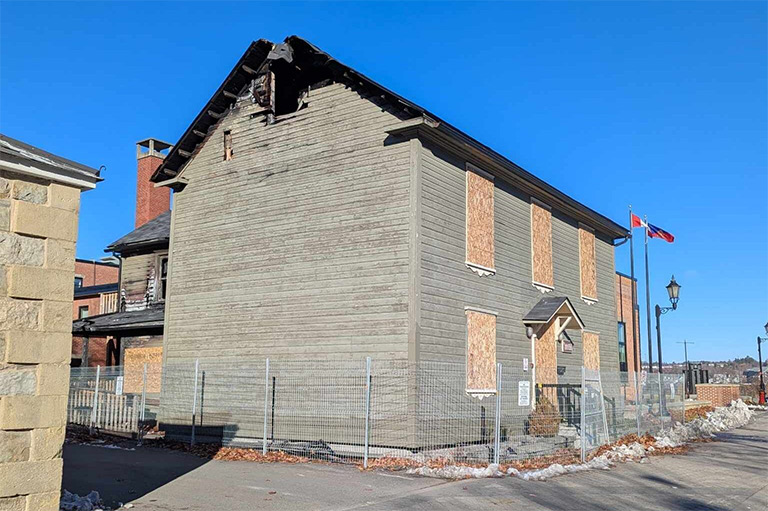Militia Arms Store

Location
Fredricton, New Brunswick
Why it matters
Erected in 1832, the modest two-storey Georgian-style Militia Arms Store building is the only surviving wooden structure in the Fredericton Military Compound National Historic Site of Canada (better known as the Garrison District), which housed the British garrison at Fredericton from 1784 until 1869. Now administered by the Department of National Defence (DND), the building was originally used to store weapons and ammunition for the local militia. In 1882 a rear extension was added and the building was converted into a military hospital. It has seen several uses since then, including serving as a warehouse, temperance hall, a caretaker’s residence and, until recently, the staff offices for the City of Fredericton Tourism Department.
With 7 uniquely curated newsletters to choose from, we have something for everyone.
Why it’s endangered
In March 2024, the building suffered a fire, largely contained to the 1882 addition, with the more historically significant 1832 portion sustaining water damage. In July, further to a fire damage assessment DND recommended demolition, and in a statement DND concluded that the simple, utilitarian building “does not possess significant heritage characteristics.” The City of Fredericton and the Association Heritage New Brunswick have voiced strong opposition to the potential demolition of this important Garrison District structure. “If it was torn down, the national historic site designation of the military compound would be radically transformed and cheapened,” said Fredericton architectural historian John Leroux in a July media interview. “We need to do better than this. There should be no reason not to try harder to save that building.”
Advertisement
Canada's Top 10 Endangered Places List 2024
Advertisement
Themes associated with this article
Advertisement













